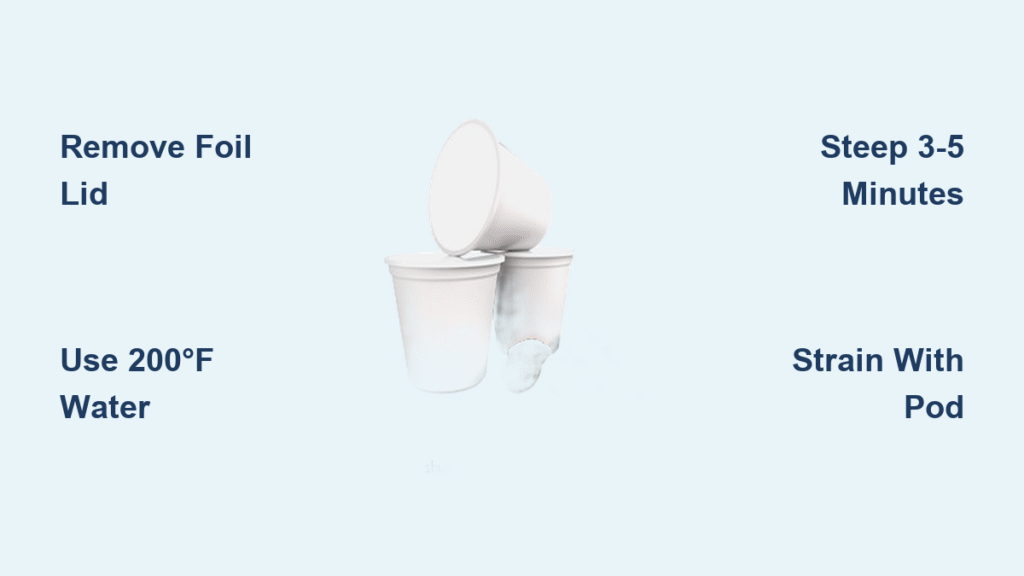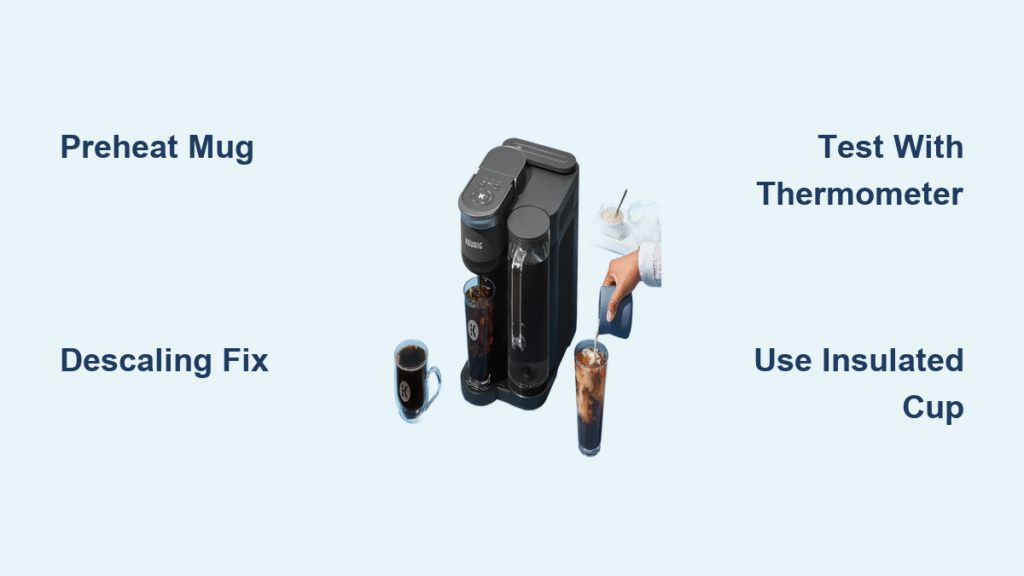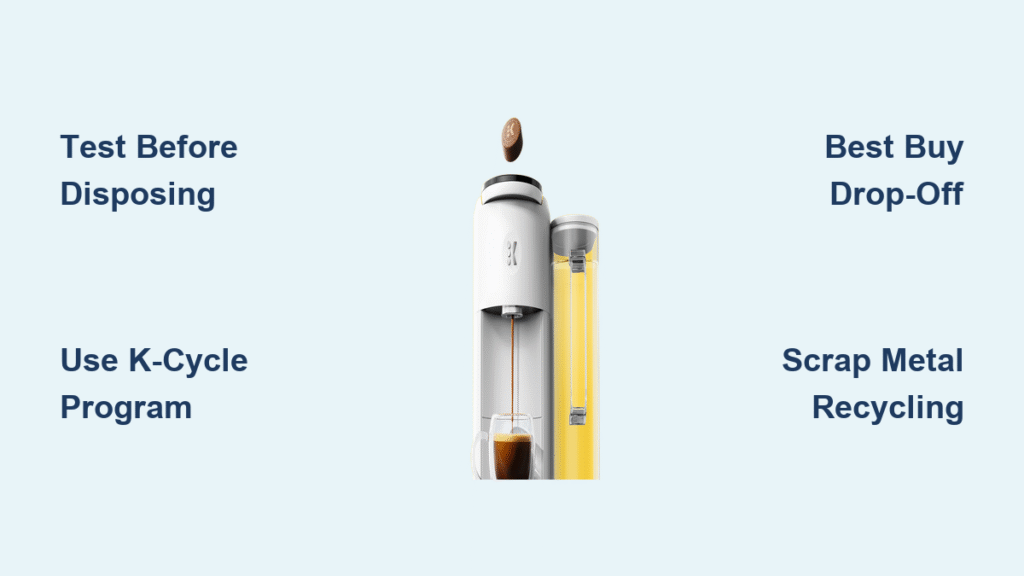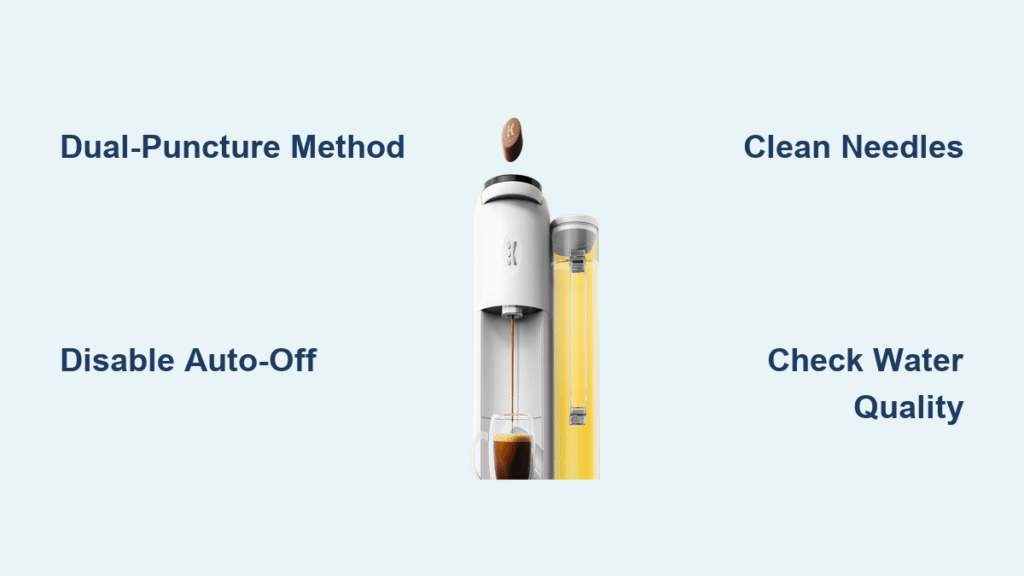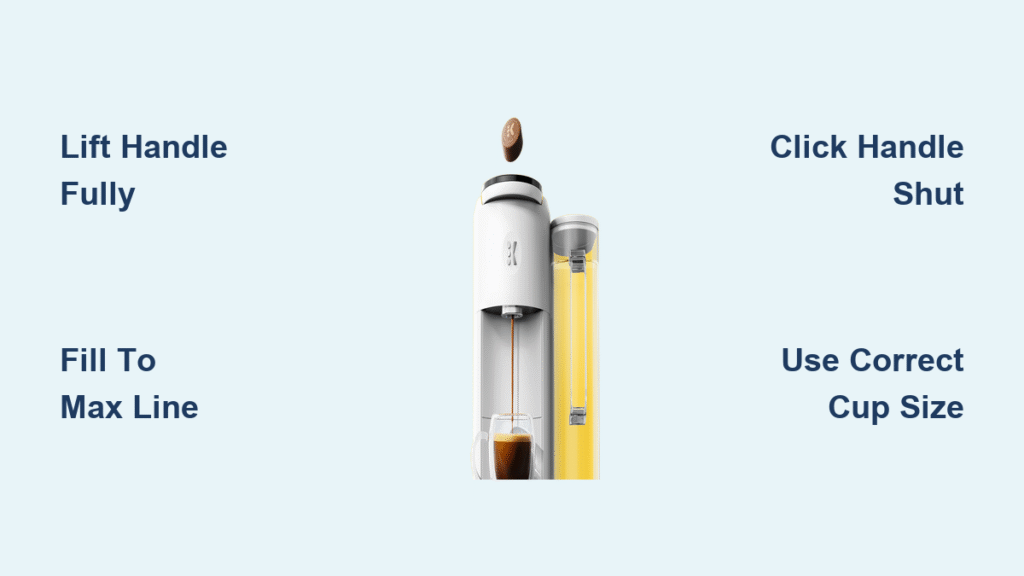Your Keurig just died, but you’re staring at a cabinet full of K-Cups gathering dust. Don’t panic—you can brew perfect coffee from those pods using everyday kitchen tools. Whether you’re camping, traveling, or just hate single-use machines, these proven techniques bypass Keurig needles entirely. You’ll transform any K-Cup into café-quality coffee in minutes with zero special equipment required. Discover how to leverage the pod’s built-in paper filter and precision grind for consistent results anywhere hot water flows.
Forget expensive adapters or complicated hacks. The secret lies in understanding K-Cup anatomy: that vacuum-sealed foil lid locks in freshness, while the glued-in paper filter and fine coffee grounds become your brewing allies. Today you’ll master four field-tested methods—from zero-equipment steeping to French press integration—that deliver bold flavor without a drop of machine dependency. Let’s unlock the hidden potential in every pod.
Why K-Cups Work Perfectly for Manual Brewing
K-Cups contain everything needed for single-serve excellence in one pod. The sealed foil lid preserves freshness until you’re ready, while the permanently attached paper filter eliminates messy cleanup. Inside, finely ground coffee optimized for pressure brewing extracts faster than standard drip grinds—meaning you need precise timing, not special gear. That small plastic support piece? It keeps the filter elevated for even extraction when you bypass Keurig needles entirely.
This built-in filtration system turns any heat-resistant container into your personal coffee maker. The fine grind demands attention to water temperature and steep time, but rewards you with rich, full-bodied results. Skip the adapter gimmicks—you already own what you need to brew exceptional coffee from non-Keurig pods.
Critical Water Temperature Control for Non-Keurig Pods
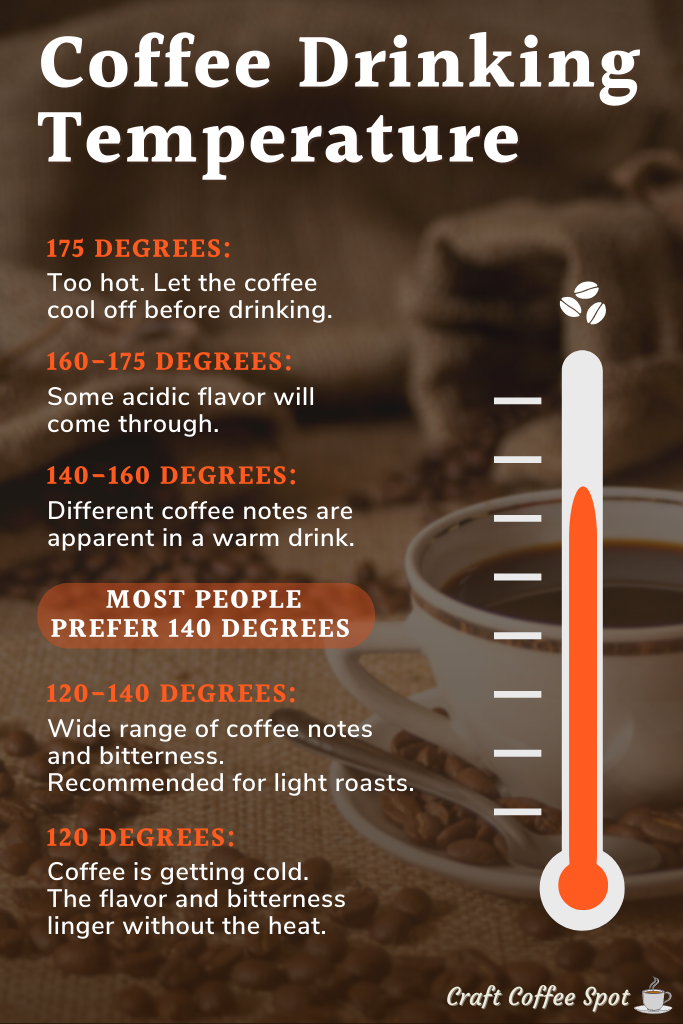
Stop Bitter Coffee Before It Starts
Heat water to exactly 200°F (93°C)—just off boiling. Water straight from a rolling boil scalds fine K-Cup grounds, extracting harsh bitterness. Cooler water leaves coffee tasting flat and underdeveloped. No thermometer? Boil water, then remove from heat for precisely 30 seconds. Test readiness by touching your container—if you can hold your hand on it for 3-4 seconds, it’s perfect.
Maintain Heat During Brewing
Temperature plummets the moment water leaves the kettle. Pre-heat your mug or French press with hot tap water while heating brewing water. For camping or hotel rooms, use insulated travel mugs as both water heater and brewing vessel. Thermos-style containers extend your optimal extraction window by 2-3 minutes—critical when working with fast-extracting K-Cup grinds.
Method 1: AK Cup Immersion Brewing (3 Minutes)
What You Need Immediately
- AK Cup portable brewer (or similar insulated single-serve system)
- Kettle or hot water source
- Scissors (for foil removal)
- Your non-Keurig pod
Step-by-Step Execution
- Slice off the foil lid completely using scissors—avoid puncturing the paper filter
- Open your AK Cup and drop the pod into the filter chamber
- Secure the lid tightly (this creates essential pressure for extraction)
- Pour 200°F water to ½ inch below the rim
- Steep 3 minutes for mild coffee, 5 minutes for bold flavor
- Remove the pod and enjoy coffee that stays hot for 30+ minutes
No Kettle? No Problem
Place the filled AK Cup inside a heated travel mug base for 5-7 minutes. Office coffee makers with warming plates work too—just monitor time closely since heating elements vary. This method delivers Keurig-level consistency without the machine’s $200 price tag.
Method 2: K-Cup Pour-Over Filter Hack (2 Minutes)

Transform Any Pod Instantly
Remove the foil lid cleanly with scissors, exposing the coffee grounds while keeping the paper filter intact. Hold the pod securely over your mug—rest it on the rim if needed. Slowly pour 200°F water in a circular motion over the grounds. The built-in filter controls flow rate, delivering full extraction in 2-3 minutes (faster than traditional pour-overs thanks to the fine grind).
Pro-Level Variations
- French press boost: Drop the foil-free pod directly into your press. Add water, steep 4-5 minutes, then press normally for richer body
- Drip cone integration: Place the pod inside your V60 or Chemex cone—the plastic cup acts as a built-in filter holder
- Hotel room trick: Use a paper coffee filter folded inside a cup as pod support when no cone is available
Method 3: Ground Coffee Extraction (Adjust for Finer Grind)

Why This Beats Emptying Pods
K-Cup coffee is ground 30% finer than standard drip coffee. Emptying pods directly into your brewer requires critical adjustments to avoid over-extraction. Use 15% less coffee than normal due to increased surface area, and shorten brew time by 20-30 seconds. Water flows through fine grounds faster—ignoring this causes bitter, over-extracted coffee.
Device-Specific Adjustments
- Drip coffee maker: Reduce coffee quantity by 15-20% in standard paper filter
- AeroPress: Ideal match—use standard filters with 195°F water and 1:15 brew ratio
- French press: Steep 3.5 minutes instead of 4, then press slowly to avoid agitation
- Moka pot: Use extra-fine grind setting and reduce heat to prevent scalding
Method 4: Zero-Equipment Steep & Strain (6 Minutes Total)
Brew Anywhere With Scissors Only
- Cut foil lid off non-Keurig pod
- Empty grounds into any heat-safe cup
- Add 6-8oz 200°F water directly to grounds
- Steep exactly 4 minutes
- Pour coffee through the empty pod (use it as strainer)
- Hold pod over clean cup to catch all grounds
Avoid Sediment Disaster
Position the empty pod at a 45-degree angle over your mug. Pour slowly in a steady stream—rushing causes grounds to bypass the filter. This method works flawlessly in hotel rooms, campsites, or dorm kitchens where equipment is limited. Total time: 9 minutes from pod to perfect cup.
Fix Common Brewing Problems Immediately
Bitter Coffee? Shorten Time by 30 Seconds
Fine K-Cup grinds over-extract rapidly. If your coffee tastes harsh, reduce steeping time in your next brew. For pour-over methods, slow your pour rate—20 seconds per ounce of water prevents channeling.
Weak Coffee? Check Your Water Temperature
Water below 195°F won’t extract enough flavor from fine grounds. Reheat water to 200°F and extend steep time by 30 seconds. Never add more grounds—this causes sludge and bitterness.
Sediment in Cup? Secure the Filter
When using pods as strainers, press the plastic rim firmly against your mug’s edge. Any gap lets grounds escape. For French press methods, wait 30 seconds after pressing before pouring to let sediment settle.
Storage and Safety Must-Knows
Never Microwave Foil-Sealed Pods
The metal layer in K-Cup lids causes dangerous sparking. Always remove foil completely before any non-machine brewing. Store unused pods in cool, dark places—direct sunlight degrades coffee oils within weeks.
Freshness Timeline After Opening
Once you slice the foil, brew within 15 minutes for peak flavor. Exposed fine grounds stale 3x faster than whole beans. Never store opened pods—the “freshness seal” is broken permanently.
Master these four methods and you’ll never waste another K-Cup. The built-in paper filter and precision grind make non-Keurig pods shockingly versatile—turning travel mugs, French presses, or even hotel glasses into premium coffee makers. Start with the zero-equipment steep method tonight, then experiment: try the AK Cup for office brewing or the French press integration for weekend luxury. Remember the golden rule—control time, not temperature—to avoid bitterness. With these techniques, your pod stash becomes the ultimate coffee insurance policy for any situation. Now go brew that perfect cup without waiting for a machine repair.

